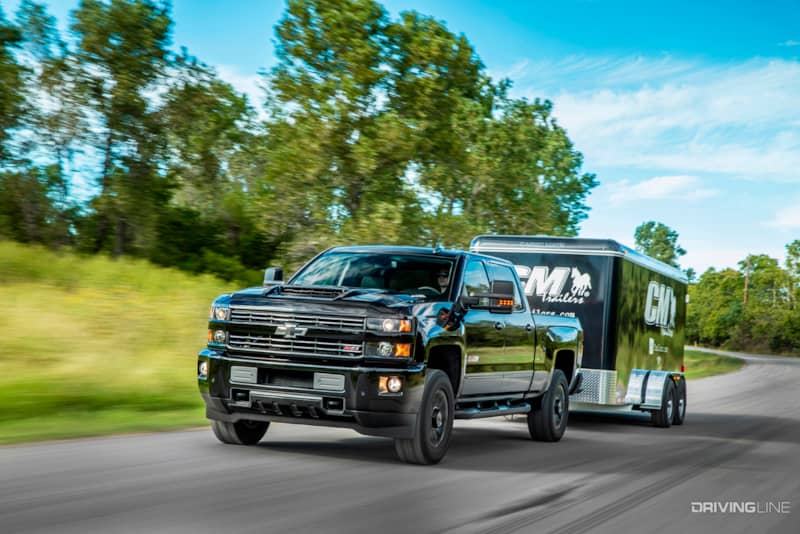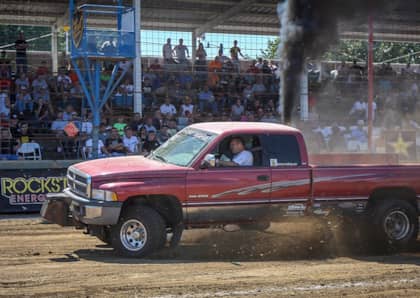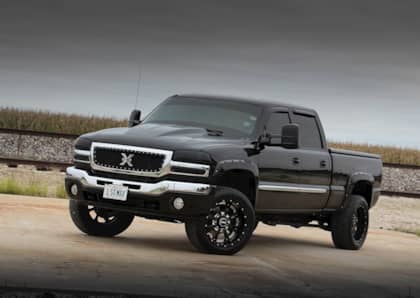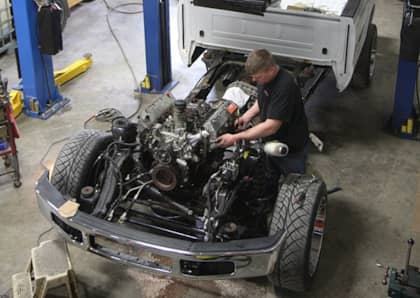7 Reasons Why Today’s Diesel Pickups Are the Ultimate Tow Rigs
At no other point in history has the diesel pickup been as capable as it is at the present time. Forget the ¾-ton and 1-ton designations of old — the heavy-duty trucks currently produced by Ford, GM and Ram are rapidly bridging the gap between the light duty and medium duty segments.
In terms of towing, payload and certainly horsepower and torque ratings, you can make the case that these trucks have more all-around capability than any Freightliner or Kenworth ever will. After all, they do come with medium duty engines, commercial-grade transmissions and can be had in Crew Cab, four-wheel drive configurations. Beyond the muscle and brawn of these trucks, you’ll also find state-of-the-art safety equipment: highly advanced turbocharger/exhaust brake technology, integrated trailer brake controllers and extremely effective service braking systems.
If you’re in the market for a new diesel truck, the following seven reasons should be all that’s needed to convince you to get down to your local dealer.
1. 900 lb-ft, and Then Some
Just 15 years ago, torque ratings were virtually half of what that are right now. Thanks to the advent of common-rail injection, variable-geometry turbocharging and each brand being locked into a perpetual numbers war, diesel engines packing 900 lb-ft of torque or more are available, be it a Cummins-powered Ram, Power Stroke-equipped Ford, or Duramax-graced Chevrolet or GMC. Ram’s high output version of the 6.7L Cummins I6 cranks out 385 hp and 900 lb-ft, GM’s new L5P 6.6L Duramax V8 produces 910 lb-ft and a class-leading 445 hp, and Ford’s revamped 6.7L Power Stroke V8 (shown below) belts out a best-in-class 925 lb-ft of torque, alongside 440 hp.
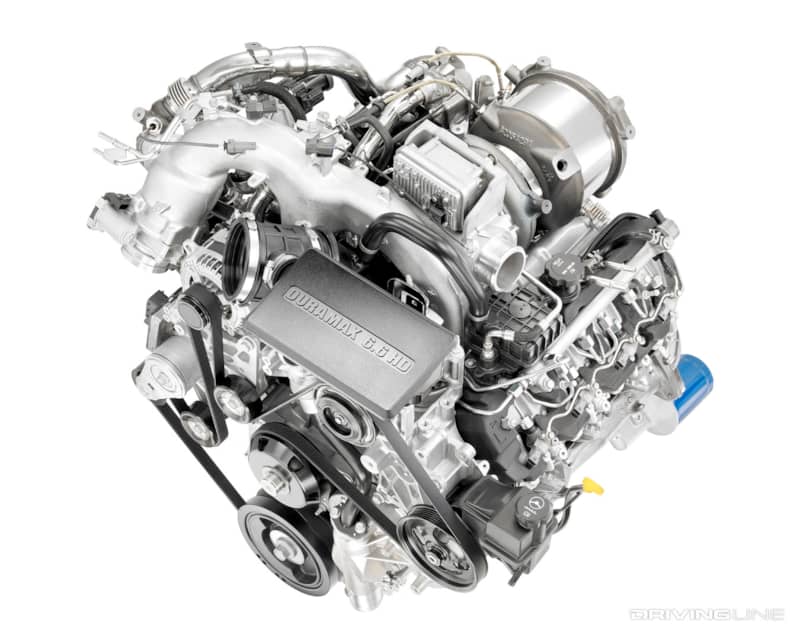
While Ford’s 6.7L Power Stroke lays claim to the highest torque figure in the category, it’s the L5P Duramax that’s the new kid on the block. An all-new engine for ’17 model year GM trucks, it packs a Denso high-pressure common-rail fuel system with solenoid-style injectors (vs. the previous Bosch system and piezoelectric injectors), a stronger cast-iron block, connecting rods with larger rod bearings, redesigned cast-aluminum pistons and higher-flowing aluminum cylinder heads. By comparison, the new L5P Duramax makes 145 lb-ft more than its predecessor, the LML (produced from ’11-'16).
2. Gargantuan Tow Ratings
The big story here is that Ford’s redesigned ’17 Super Duty ended Ram’s short reign as the top-dog in the towing segment. A properly equipped F-450 can now lug 32,500 pounds’ worth of anything you want via gooseneck hitch (41,800-pound GCWR) vs. Ram’s not-so-far-behind maximum of 31,210 pounds. We’ll most likely have to wait for the release of ’19 model year Rams to see FCA’s rebuttal. Ford bests GM in the conventional towing category as well, upping the ante to 21,000 pounds on F-350 models (vs. 20,000 pounds on Silverado and Sierra 3500s).
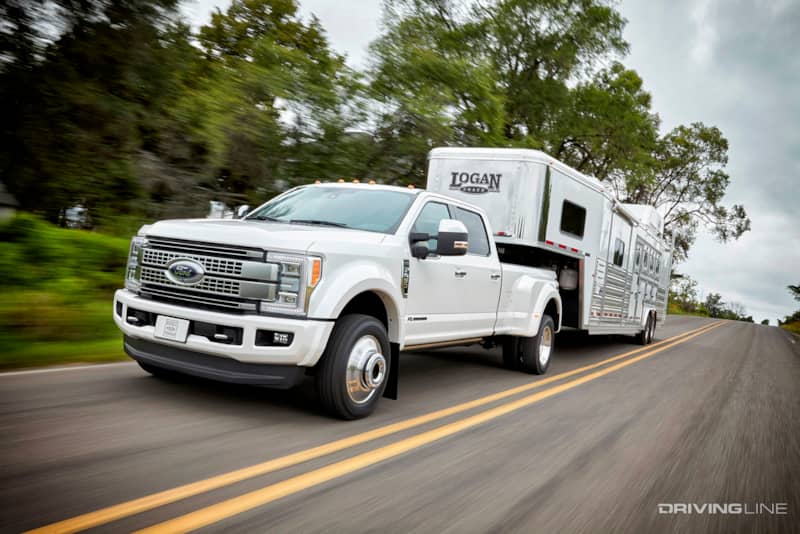
No matter which horse you pick, Ford, GM and Ram all offer trailer sway control, factory-installed hitches, and frames, axles and suspension that are more than capable of handling massive workloads. In fact, these trucks are so at home with weight bearing down on them that it’s easy to forget when you’ve got 12 tons behind you. While the aforementioned towing capacities are incredible, you may want to check with your state’s “rulebook” before strapping 15 tons of cargo to one of these bad boys — a CDL might just be required to use it to it's maximum potential.
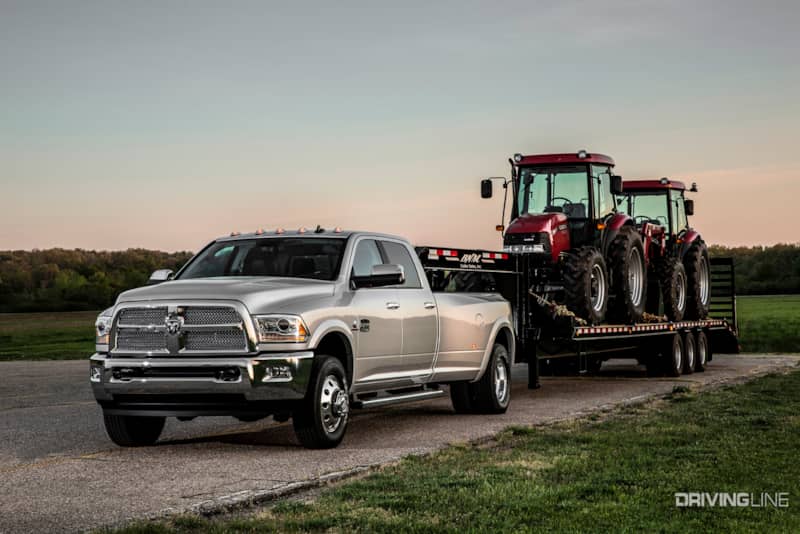
"Park the Semi, Jimmy."
You can’t tell us people aren’t going to try to emulate what a Class 8 truck can do given the insane towing capacity today’s diesel pickups possess. Granted, this grain trailer was empty upon delivery to a Case IH dealership in Kansas, but you get the point we’re trying to make: the current crop of heavy-duty trucks are capable of towing just about anything. It’s no wonder we’ve heard countless stories of flat-land truck owners grossing nearly 50,000 pounds.
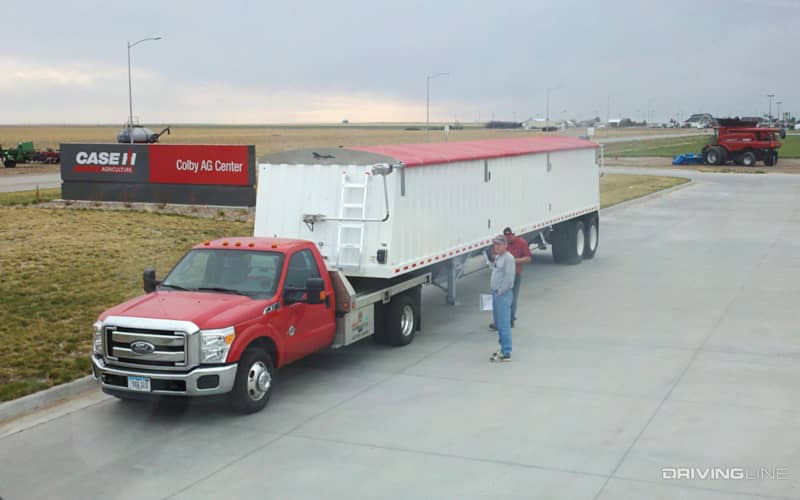
3. Heavy Hauling
If you get the sense that Ford wanted its ’17 Super Duty sitting atop the heavy-duty segment in every category, you’d be right. Maximum hauling capacity checks in at 7,630 pounds for an XL model, regular cab, 4x2 F-350 dually sporting the 6.2L gas V8. A similarly configured Ram is certified to carry 7,390 pounds in the bed, and GM’s version has a max payload rating of 7,153 pounds (the same figure from ’16 models). Full disclosure: diesel-equipped maximum payload ratings haven’t yet been released by all manufacturers.
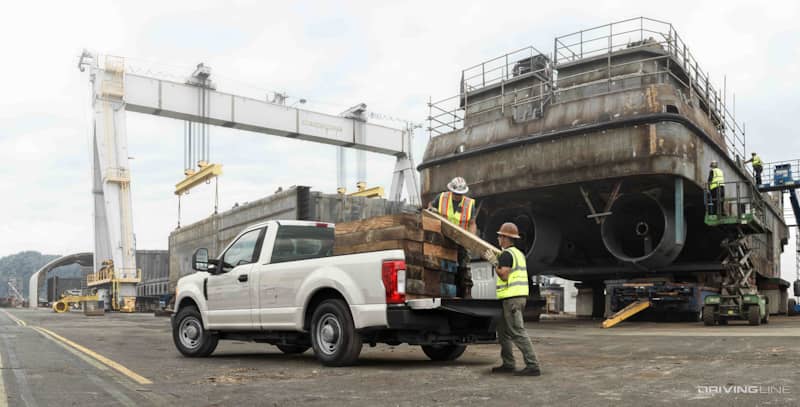
4. Integrated Exhaust Brake
The exhaust brake function is quite possibly the greatest technological breakthrough to ever grace the diesel pickup market. Technically a turbo brake, it uses the variable geometry functionality of the engine’s turbocharger to restrict exhaust flow leaving it, creating increased back pressure, and thereby slowing the truck (and trailer) down. It simply takes advantage of the capabilities within the turbine side of the turbocharger and saves both your service and trailer brakes in the process. The best news here is that an exhaust brake option is available on all three brands, although we believe Ram has a slight edge in this department (i.e., the most aggressive braking power).
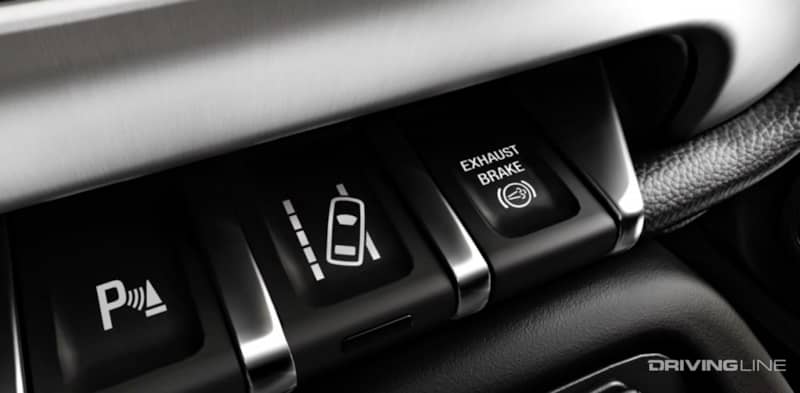
5. Integrated Trailer Brake Controller
Arguably nothing did more to further end-user towing confidence than when Ford integrated a trailer brake controller into the ’05 Super Duty. GM would follow suit, debuting them on ’07.5 HD trucks, which was followed shortly thereafter by Ram offering them in ’10. Having a trailer brake controller available as standard equipment saves the consumer the cost of buying and installing an aftermarket unit, but beyond that the OEM controllers are fully-integrated with the truck’s computer for unmatched reaction time. And (of course) they’re covered under the factory warranty.
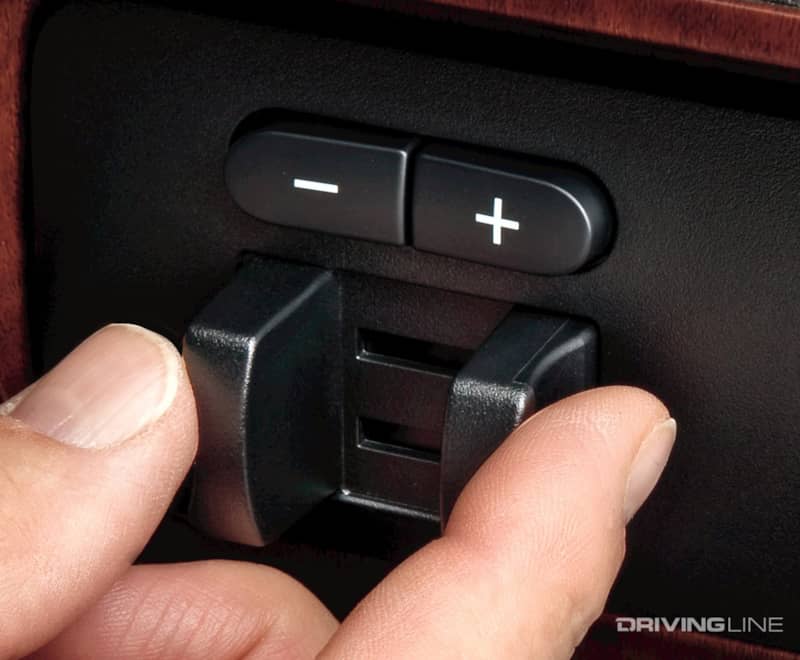
6. Commercial-Grade Transmissions
Coping with engines producing in excess of 900 lb-ft of torque calls for one tough transmission. Luckily, GM, Ford and Ram all have their bases covered here. Setting the bar back in 2001 — and arguably still the No. 1 automatic found behind a diesel — is the Allison 1000 that accompanies the 6.6L Duramax in GM trucks. This 6-speed slushbox houses the largest shafts, the highest 6th gear ratio and has the best name recognition in the industry. Last but not least, it’s topped off with a large diameter torque converter — the first component to greet the 910 lb-ft of torque leaving the engine.
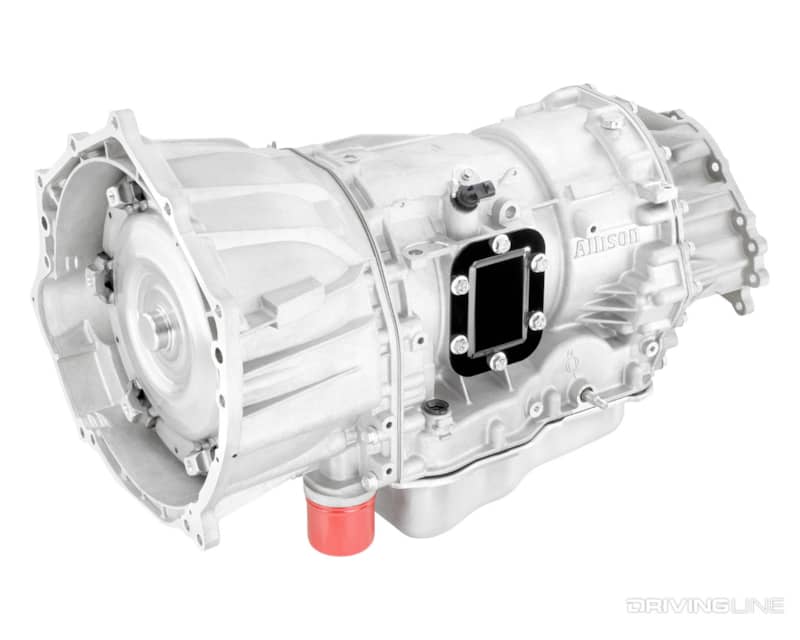
For years, heavy-duty Rams were notorious for their automatic transmission troubles. It seemed that no matter what transmission resided under the truck, the torque of the Cummins in front of it would tear it to pieces. In an effort to quell its transmission woes, Ram brought an updated version of its outsourced AS68RC cab-and-chassis transmission, the Aisin AS69RC (below), into the picture in 2013. Thus far, the commercial-grade 6-speed has enjoyed a much better track record than its also-available counterpart, the 68RFE, although the AS69RC is the only option Ram allows behind the high output version of the 6.7L Cummins. As for Ford, its 6R140 TorqShift 6-speed has followed in the path of its predecessor (the 5R110), which is to say that it’s been rock-solid reliable since debuting in ‘11.
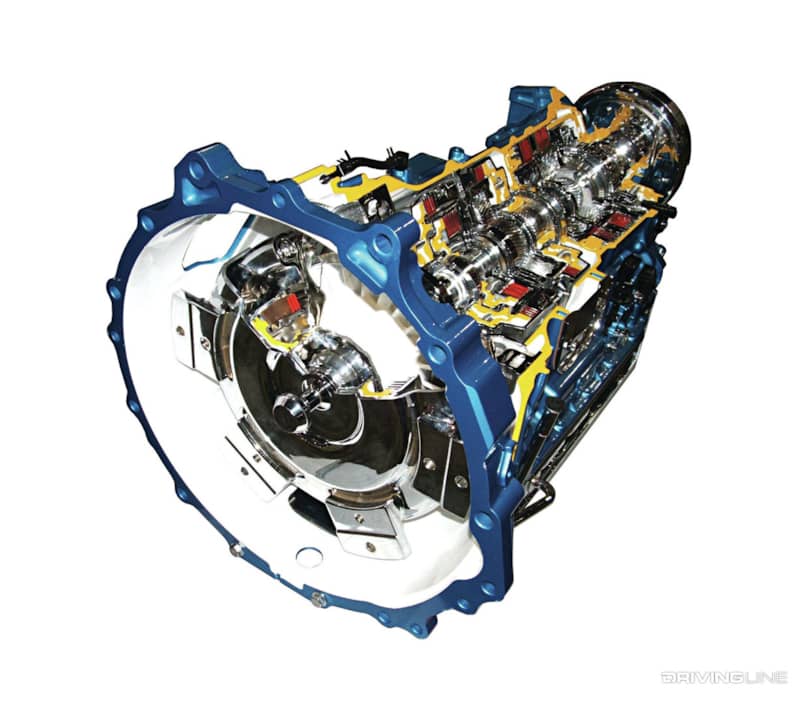
7. Big Brakes
Who knew heavy-duty pickups could brake from 60 to 0 mph in less than 140 feet? Thanks to vastly improved and upsized service brakes, each of the Big Three can bring their 4-ton heft to a halt in a hurry. All of them feature anti-lock braking systems (ABS) with front and rear disc brakes, and 14-inch diameter rotors seem to be the norm. The ’17 Ford Super Dutys feature 14.29-inch front and rear rotors on F-250 and F-350 models, while 15.39-inch front and 15.74-inch rotors come standard on the F-450. GM’s feature corrosion-resistant, Duralife rotors that measure 13.98 inches up front and 14.17 inches in the rear. Ram 3500s pack 14.2-inch front rotors, and 14.1-inch rear units.
When strong service brakes are combined with an effective exhaust brake function and an integrated trailer brake controller, you almost have to induce a white-knuckle towing scenario in order to experience one. Not only are these trucks light on their feet thanks to packing between 385-to-445 hp and 900-to-925 lb-ft of torque, but they also stop on a dime when compared to the trucks from just 10 years ago.
